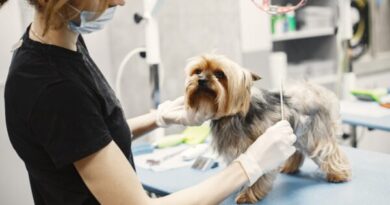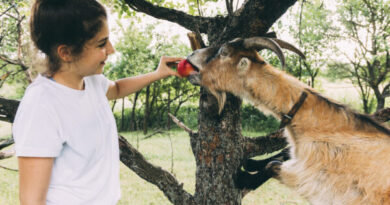Mastering Dog Massage Techniques: A Path to a Relaxed and Happy Canine Companion
Bringing a dog into your life is a joyous occasion, filled with playtime, walks, and companionship. Beyond the basics of care and training, one of the most beneficial practices you can incorporate into your dog’s routine is massage. Dog massage techniques not only help in relieving stress and anxiety but also promote better health and strengthen the bond between you and your pet. This blog explores various dog massage techniques to help you create a relaxed and happy environment for your canine companion.
The Basics of Dog Massage:
Before diving into specific techniques, it’s important to understand some foundational principles of dog massage:
Patience and Calmness:
Dogs can sense your energy, so it’s crucial to approach massage sessions with a calm and patient demeanor. This helps your dog relax and enjoy the process.
Gentle Pressure:
Always use gentle pressure when massaging your dog. Dogs have different sensitivities, and what might feel soothing to one dog could be uncomfortable to another.
Consistency:
Regular massage sessions are more beneficial than occasional ones. Try to incorporate short massage sessions into your dog’s daily routine.
Benefits of Dog Massage:
Dog massage offers numerous benefits, including:
- Reduced Anxiety and Stress: Massage can help calm anxious dogs and reduce stress levels.
- Improved Circulation: Regular massage promotes better blood flow, aiding in overall health.
- Pain Relief: Massage can alleviate pain from conditions like arthritis or muscle stiffness.
- Enhanced Bonding: Massage sessions strengthen the bond between you and your dog, fostering trust and affection.
Dog Massage Techniques:
Here are some effective dog massage techniques that you can easily perform at home:
Effleurage:
Effleurage is a gentle stroking technique that warms up the muscles and relaxes your dog. Using the palms of your hands, apply light pressure and make long, sweeping strokes along your dog’s back, from the neck to the tail. This technique helps in increasing blood circulation and preparing the muscles for deeper massage.
Petrissage:
Petrissage involves kneading and is excellent for relieving muscle tension. Using your fingers and thumbs, gently knead the muscles in a circular motion. Focus on the larger muscle groups, such as the shoulders and thighs. This technique helps in loosening tight muscles and promoting relaxation.
Friction:
Friction massage involves applying deeper pressure to specific areas to break up muscle knots and improve flexibility. Use your fingertips to make small, circular motions over areas where you feel tension or tightness. Be cautious not to apply too much pressure, as this can cause discomfort.
Tapping or Percussion:
Tapping, also known as percussion, involves light, rhythmic tapping using the edges of your hands or your fingertips. This technique stimulates the muscles and nerves, providing a revitalizing effect. It’s particularly useful for dogs who are active or participate in agility sports.
Passive Touch:
Passive touch is a technique where you gently place your hands on different parts of your dog’s body without applying any pressure. This technique is especially beneficial for anxious or elderly dogs, as it helps them feel secure and comforted without any physical manipulation.
Incorporating Massage into Your Routine:
Creating a Relaxing Environment:
Choose a quiet, comfortable space for massage sessions. Soft lighting and calming music can help create a relaxing atmosphere for your dog.
Observing Your Dog’s Reactions:
Pay attention to your dog’s body language during the massage. If your dog shows signs of discomfort, such as pulling away or tensing up, adjust your technique or pressure.
Combining Massage with Other Relaxation Techniques:
Incorporate other relaxation techniques, such as aromatherapy or gentle stretching, to enhance the benefits of the massage. Essential oils like lavender can be soothing, but always ensure they are safe for dogs and used in moderation.
Conclusion:
Mastering dog massage techniques is a wonderful way to enhance your dog’s well-being and deepen your bond. Regular massage can help reduce anxiety, improve circulation, and relieve pain, leading to a happier, healthier dog. Remember, each dog is unique, so be attentive to their individual preferences and reactions. With patience and consistency, massage can become a cherished part of your dog’s routine, contributing to a relaxed and happy canine companion. Happy massaging!
FAQs:
1.What are the benefits of massaging my dog?
Answer: Dog massage offers numerous benefits, including:
- Reduced anxiety and stress.
- Improved circulation and blood flow.
- Pain relief from conditions such as arthritis or muscle stiffness.
- Enhanced bonding between you and your dog.
- Increased flexibility and range of motion.
2. How often should I massage my dog?
Answer: The frequency of massage can vary depending on your dog’s needs and preferences. Generally, short, daily sessions can be beneficial. For dogs with specific health issues or high levels of anxiety, more frequent massages may be helpful. Always observe your dog’s reactions and adjust accordingly.
3. Can all dogs benefit from massage?
Answer: Yes, most dogs can benefit from massage, regardless of age or breed. However, it’s important to consider your dog’s individual health condition and temperament. Elderly dogs, dogs with chronic pain, or those recovering from surgery may especially benefit from regular massage.
4. Are there any dogs that should not receive massage?
Answer: Dogs with certain medical conditions, such as open wounds, skin infections, or fractures, should not receive massage until they have healed. Additionally, always consult your veterinarian before starting massage if your dog has a serious health condition, such as cancer or a heart condition.
5. How do I know if I’m applying the right amount of pressure?
Answer: Always start with gentle pressure and observe your dog’s reactions. If your dog seems relaxed and content, you are likely using the right amount of pressure. If your dog pulls away, tenses up, or shows signs of discomfort, reduce the pressure immediately. Over time, you’ll become more attuned to what feels comfortable for your dog.
6. What should I do if my dog doesn’t like being massaged?
Answer: If your dog seems uncomfortable or anxious during massage, try shorter sessions and use very gentle, soothing strokes. It may help to create a calm environment with soft lighting and relaxing music. You can also try incorporating treats or gentle verbal praise to create positive associations with the massage.
7. Can I use essential oils or lotions during the massage?
Answer: Some essential oils, like lavender, can be calming for dogs, but they should be used with caution. Always ensure that the oils are safe for canine use and dilute them properly. Avoid using lotions or oils that are not specifically formulated for dogs, as they may contain ingredients that can irritate your dog’s skin or be toxic if ingested.
8. Can massage help with my dog’s arthritis?
Answer: Yes, massage can be beneficial for dogs with arthritis by improving circulation, reducing stiffness, and relieving pain. Techniques like effleurage and petrissage are particularly helpful. Always consult your veterinarian before starting a massage routine for a dog with arthritis or other chronic conditions.
9. How long should each massage session last?
Answer: The length of a massage session can vary based on your dog’s comfort and tolerance. For beginners, start with short sessions of about 5-10 minutes and gradually increase the duration as your dog becomes more accustomed to the process. Most dogs enjoy sessions lasting between 15-30 minutes.
10. Can I learn dog massage techniques on my own, or should I consult a professional?
Answer: Many basic dog massage techniques can be learned on your own through reputable books, online tutorials, and videos. However, if your dog has specific health issues or you want to ensure you’re using the best techniques, consulting a professional animal massage therapist can be very beneficial. They can provide personalized guidance and help you tailor the massage to your dog’s needs.




